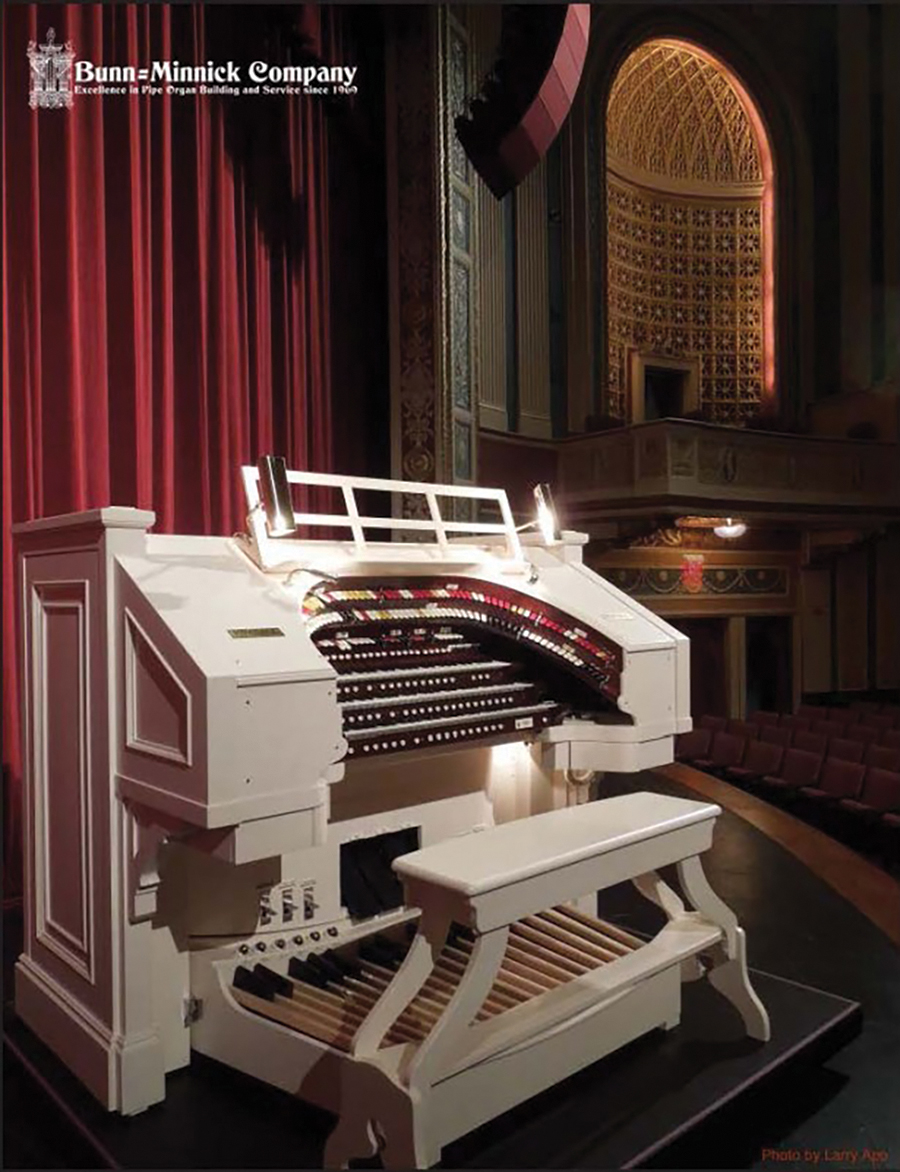Before a screening of Lon Chaney’s silent film, “The Phantom of the Opera,” the interior of the theater darkens. The audience begins to turn their faces away from the soft blue glow of their smartphones and attend to the direction of the stage.
A spotlight focuses on the stage as an organ plays opening notes of Camille Saint-Saens’ “Danse Macabre,” and music fills the theater. As the song approaches its climax, the sounds of organist Clark Wilson and a 1924 Kimball, slowly rise from the orchestra pit.As Wilson continues to play the several rows of keys, you hear not only the sound of an organ, but other sounds as well. When Wilson stomps on a pedal, sounds similar to thunder and rain emanate throughout the theater.
“Imagine somebody approaching you, saying I have this wonderful gift to give to you,” said David Smith, general manager of the Lerner Theater in Elkhart.
Then the next thing they do is, “hand you a giraffe and walk away.” This is what the Lerner’s white 1924 Kimball initially was to Smith.
Smith started just a mere eight weeks before the Lerner’s grand reopening in 2011 after being closed for two years of renovations. The Kimball organ was out for renovations and reconditioning at the time as well.
When the company tasked with restoring the organ let Smith know that it was ready, they requested that Smith provide them with two weeks to bring the organ back and get everything set up.
Smith said, “I need closer to eight weeks.”
This is due to Smith realizing exactly what he had on hand in the form of the 1924 Kimball. The same organ was present when the Lerner itself initially opened its doors as a vaudeville theater on Thanksgiving Day in 1924.
“I realized that the organ onstage is just a console,” Smith said. The organ is just a piece in the complex set up the Lerner and Smith possess, a set up that is one of only three remaining in the entire nation. “A pipe organ, or a theater organ, is a living breathing thing,” said Smith.
The sounds that were heard during Wilson’s rendition of “Danse Macabre” were not coming from the organ onstage. Smith said the organ that is heard is actually located in one of two climate-controlled chambers located to the left and right of the Lerner stage.
Recessed behind arches the color of gold above sets of box seats, these chambers contain multiple instruments and mechanisms such as a piano, drums, a harp and a train whistle, among others.
During “The Phantom of the Opera” when Lon Chaney’s Phantom has Christine held captive in his subterranean hideout below the streets of Paris, the Phantom turns his attention to a cat-shaped bell that has been mounted on the wall to alert on anyone approaching the hideout.
As the cat’s arms began to swing up and striking the base as the arms make their way back down, in the theater, the sound of a bell emanates from the chambers as the organist hits a key on the console in perfect time with what is being depicted on screen.
The coordination and intricacy involved with the organ onstage, the two chambers and the silent film itself combine to create a rich sensory experience. Smith said that he cannot think of a purer art form.
Since most organists have to interact with different set ups anywhere they go, Smith said at the Lerner “an organist has to make a one-night stand look like a 50-year marriage.”
David Kendall, professor of communication at Goshen College, believes events like this are of cultural significance.
“By revisiting your history, you understand where we come from,” Kendall said.
To students such as Claude Lilford, a sophomore double majoring in creative writing and film production, experiencing silent film is hugely important. Lilford says, “There are things in [silent film] that modern cinema doesn’t do.”
“Most people don’t have a clue what’s actually going on,” Smith said in reference to the experience at the Lerner. Smith thinks all the audience sees is what’s happening onstage while the film is playing. In Smith’s mind, the organist is composing a symphony as well as a soundtrack in real time through the organ acting as a console.
“If people had a clue what’s going on [in the chambers] during a silent movie,” said Smith, “this theater would be packed.”

